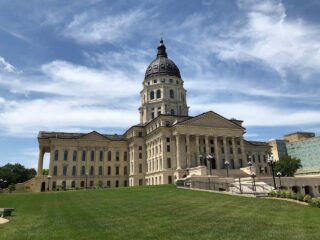HOME | ABOUT US | MEDIA KIT | CONTACT US | INQUIRE
HOME | ABOUT US | MEDIA KIT | CONTACT US | INQUIRE
As Coronavirus cases continue to rise, aid from the federal government has become increasingly necessary for businesses, health departments, and individuals receiving unemployment. Gov. Laura Kelly and the State Finance Council agreed on distribution plans for $1 billion of Coronavirus Aid in Kansas last week.

A task force called SPARK was created as a part of Kelly’s proposals, dedicated to handle funding provided from the Coronavirus Aid and specifically the CARES Act.
A three-stage plan will focus on areas of struggle to begin, followed by economic investments towards those who lost their jobs due to COVID-19. Lastly, funding will be given to prevent or serve as a backup in case of another Coronavirus outbreak.
The first stage provided by SPARK plans to distribute $400 million to 103 counties in Kansas to provide support for health and relief fees due to Coronavirus starting this month. The distribution will depend on the population of the area, supplying more funds for areas of higher impact. An article from www.kmuw.org stated $50 million of the total will be used specifically towards counties with leading numbers of COVID-19 cases.
The remaining $350 million will be distributed based on population, taking into account the numbers of confirmed cases and which locations need the most assistance.
A plan explaining how each county will spend funding must be submitted by Aug.
The second stage of funding provided by SPARK will focus on economic investments starting in Aug. as well. This includes availability to public and private schools if approved. In fact, the State Finance Council approved $26 million towards higher education in public universities.
SPARK plans to spend around a total of $525 million during the second stage of funding.
With a plan in progress and an opportunity to help Kansas during a time of chaos, the time limit is unprecedented for future aid plans due to the decline in economy, unemployment and sickness spreading during this time.
When Kelly increased unemployment benefits by an extra $600 in March to help the community, the Kansas Department of Labor was receiving around 60,000 claims per week. Months later, with unemployment distribution and the CARES Act reaching high numbers, Kelly hesitated to fund unemployment until later rounds to get a better understanding of the economic condition in Kansas during that time.